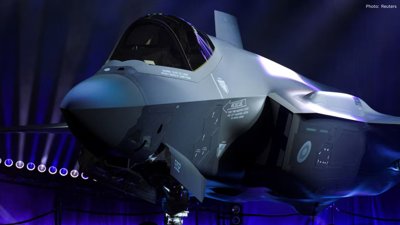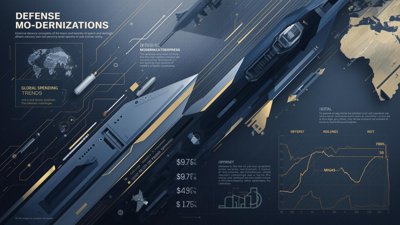
Post by : Amit
A New Line of Defense Against Distraction
In the high-stakes world of commercial transportation, safety has always been non-negotiable. But in recent years, the threat of distracted driving has emerged as a leading factor behind collisions involving large trucks and fleet vehicles. According to traffic safety boards and insurance data, distraction—whether from mobile devices, internal dispatch systems, or driver fatigue—is responsible for thousands of crashes and untold financial damage annually.
To address this mounting issue, ICC The Compliance Center has launched a dedicated Driver Distraction Mitigation Program, marking a pivotal step toward reshaping commercial fleet safety through behavioral education and regulatory alignment. Unlike traditional compliance programs that focus solely on rules and regulations, ICC’s initiative zeroes in on changing mindsets, embedding safer habits, and cultivating a culture of attentiveness behind the wheel.
Why the Focus on Distraction Now?
Distracted driving isn’t new, but its increasing pervasiveness in commercial fleets has alarmed safety advocates, insurers, and government regulators alike. Long-haul drivers often operate under tight deadlines, navigating through congested urban roads or isolated rural stretches. The job demands a high level of mental acuity—yet the environment is filled with potential diversions.
From in-cab digital alerts and frequent route updates to the ever-present temptation to check a personal phone, commercial drivers face a deluge of stimuli that can pull attention away from the road. Add to that driver fatigue, especially during overnight shifts, and the results can be catastrophic.
Research from the National Highway Traffic Safety Administration (NHTSA) reveals that distraction was a contributing factor in nearly 10% of fatal crashes involving large trucks in the past year. Industry professionals estimate the real figure may be even higher due to underreporting and challenges in proving distraction after the fact.
Recognizing this danger, ICC designed its new program to address not just the “what” but the “why” and “how” of distraction-related incidents.
What Sets the Program Apart
The Driver Distraction Mitigation Program is comprehensive in scope but highly targeted in execution. It provides a behavioral-based approach, combined with regulatory context, giving both drivers and fleet managers actionable insights they can apply daily.
At its core, the program includes:
Crucially, ICC’s program doesn’t just aim to inform—it strives to inspire action. Drivers are engaged, not lectured. Fleet managers are equipped, not overwhelmed. The result is a program that has the power to reshape an organization’s approach to road safety from the ground up.
The Commercial Driver’s Unique Challenge
Commercial drivers operate under unique conditions. Their responsibilities extend far beyond simply navigating a vehicle. They are bound by compliance protocols, delivery expectations, and the pressure of maintaining tight schedules over long distances. These factors heighten the risk of cognitive fatigue, emotional stress, and reduced attention—all of which contribute to distraction.
Moreover, the rise of in-cab technology—from fleet tracking to automatic rerouting and in-vehicle communication systems—has added to the mental load. While these tools improve efficiency, they also create new opportunities for distracted behavior.
ICC’s program addresses this by helping drivers differentiate between helpful tools and harmful distractions, and teaching them techniques such as mental resets, situational awareness drills, and safe multitasking alternatives. These strategies ensure that even in tech-heavy cabs, drivers remain the most alert component in the vehicle.
Compliance Meets Culture
One of the most compelling features of ICC’s initiative is its emphasis on organizational culture. Rather than treating safety as a checkbox activity, the Driver Distraction Mitigation Program helps companies embed awareness into their corporate DNA.
It aligns seamlessly with Federal Motor Carrier Safety Administration (FMCSA) regulations, making it easier for companies to prove compliance during reviews and inspections. But it goes further by encouraging voluntary best practices that often exceed minimum legal standards.
Fleet managers can use the included guidance documents to:
This layered approach makes it easier for safety officers to shift accountability from enforcement to engagement, fostering a workplace where every driver feels responsible for maintaining focus on the road.
A Competitive Advantage in a Risky Industry
Road safety isn’t just a legal issue—it’s a business imperative. Companies that prioritize driver safety often see benefits that go far beyond compliance. Lower accident rates lead to:
In today’s marketplace, where ESG reporting and ethical supply chains play a growing role in procurement decisions, having a proven distraction mitigation strategy adds to a fleet’s reputation. ICC’s program gives companies a tangible proof point in safety-focused bids and partnership evaluations.
Positive Reception Across the Sector
The rollout has already attracted praise from across the transport safety ecosystem. “This program targets a blind spot that too many fleets still ignore,” said Carla Niven, a transportation safety consultant based in Ontario. “It’s not just about technology—it’s about behavior. That’s where the real impact is.”
Fleet operators who’ve piloted the program report strong engagement from drivers, especially because the content respects their experience. “It wasn’t patronizing,” said one fleet manager from Chicago. “It felt like it was built by people who understand the road, not just office policies.”
Even insurers have taken notice. Some have indicated they may consider participation in such programs as a positive underwriting factor, offering clients preferential rates in recognition of reduced risk.
A Timely Response to Mounting Pressure
The launch of ICC’s program comes at a critical juncture. Regulators across the U.S. and Canada are clamping down on distracted driving with steeper fines, stricter monitoring requirements, and calls for better industry self-regulation.
In states like California and New York, commercial drivers can now face hefty penalties for handheld phone use. Canadian provinces like British Columbia and Ontario have also introduced demerit-point penalties and publicized driver distraction enforcement campaigns.
For fleets caught unprepared, these crackdowns can lead to unwanted costs, reputation damage, and even license suspensions. ICC’s program gives companies a preemptive strike against those risks.
Holistic Safety for the Long Haul
Beyond the distraction-specific content, ICC encourages fleets to view the program as part of a larger ecosystem of safety training. It can be paired with modules on:
This integrated approach turns safety into a continuous learning process, not a one-time seminar. With customizable training paths, multilingual content options, and flexible deployment via mobile or desktop, the program suits companies of all sizes and tech capabilities.
Smarter Driving Through Smarter Programs
As vehicle automation, data systems, and regulatory scrutiny continue to evolve, so too must the mindset of drivers and the organizations behind them. Distraction will remain a risk, but with initiatives like ICC’s, companies can now meet that risk with focus, intention, and a real plan.
The Driver Distraction Mitigation Program is more than a response to a safety challenge—it’s a commitment to transformation. It elevates training into a strategic tool, equipping fleets with the insight, structure, and culture they need to keep drivers safe and focused.
In an era where every mile matters, attention is the new currency. ICC’s new program ensures that, for commercial drivers, every second on the road is spent with purpose—and every journey, a step toward a safer future.
commercial driver, ICC, FMCSA driver distraction compliance, Truck Drivers










Advances in Aerospace Technology and Commercial Aviation Recovery
Insights into breakthrough aerospace technologies and commercial aviation’s recovery amid 2025 chall

Defense Modernization and Strategic Spending Trends
Explore key trends in global defense modernization and strategic military spending shaping 2025 secu

Tens of Thousands Protest in Serbia on Anniversary of Deadly Roof Collapse
Tens of thousands in Novi Sad mark a year since a deadly station roof collapse that killed 16, prote

Canada PM Carney Apologizes to Trump Over Controversial Reagan Anti-Tariff Ad
Canadian PM Mark Carney apologized to President Trump over an Ontario anti-tariff ad quoting Reagan,

The ad that stirred a hornets nest, and made Canadian PM Carney say sorry to Trump
Canadian PM Mark Carney apologizes to US President Trump after a tariff-related ad causes diplomatic

Bengaluru-Mumbai Superfast Train Approved After 30-Year Wait
Railways approves new superfast train connecting Bengaluru and Mumbai, ending a 30-year demand, easi